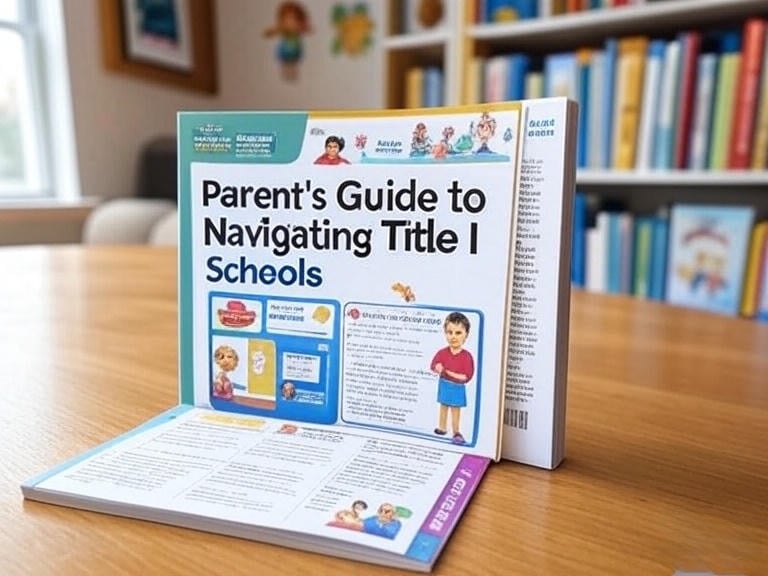
DISCOUNTED EDUCATION PRICING! CALL 1-877-891-8411. We Gladly Accept School Purchase Orders!

When you hear the phrase “Title I school,” it can sound complicated—maybe even intimidating. But as a parent, understanding what Title I means is one of the most powerful tools you can have to support your child’s education.
Title I is more than just a funding label. It’s about equity, opportunity, and giving every student the resources they need to thrive—whether that means extra reading support, access to new technology, or programs that bring families and schools closer together.
This guide will break down everything you need to know as a parent: what Title I is, your rights, the types of programs you can expect, and how you can get involved. By the end, you’ll see that Title I isn’t something to fear—it’s something to celebrate.
Title I is part of the federal Elementary and Secondary Education Act (ESEA), first passed in 1965. The goal? To close achievement gaps by providing extra funding to schools that serve large numbers of students from low-income families.
But here’s the important part: funding doesn’t just help one group of children—it supports the entire school community.
That’s why you’ll often see Title I dollars used for:
📊 Stat to Know: According to the U.S. Department of Education, nearly 60% of public schools in the U.S. receive Title I funds. That means there’s a good chance your child’s school is one of them.
👉 Snippet for parents: If your school is Title I, it means it has access to additional funding designed to lift every child—not a label of weakness.
Why should parents care if a school is Title I? Because it directly shapes your child’s learning environment.
Imagine two classrooms: one without Title I funding, and one with it. In the second classroom, students might have:
Those differences can be game-changing.
📌 Quick Example: At a Title I elementary school in Texas, funding was used to purchase take-home reading kits. Parents reported that nightly reading doubled, and within a year, literacy rates rose by more than 15%.
Parents often don’t realize that Title I comes with legal protections that give them a strong voice in their child’s education. Here are the most important rights you should know:
Schools must notify you if your child’s teacher does not meet state certification standards. This transparency ensures your child has access to highly qualified educators.
You can ask for details about:
Schools are required to include parents in developing Title I plans, reviewing programs, and offering input on how funds are spent.
Every Title I school must create a compact—a written agreement outlining how teachers, parents, and students will share responsibility for learning.
📌 Snippet for parents: If you haven’t seen your school’s Parent and Family Engagement Policy, request it today—it’s your roadmap for involvement.
While every district designs programs differently, most Title I schools focus on four major areas:
👉 Pro Tip for Parents: Ask your principal for a breakdown of how Title I funds are allocated this year. Knowing where dollars go helps you identify which programs your child can benefit from.
One of the strongest elements of Title I is that it requires schools to partner with parents. In fact, schools that don’t engage families risk losing funding.
Here’s how you can get involved:
📌 Snippet: Research shows that students with involved parents, especially in Title I schools, earn higher grades, attend more regularly, and are more likely to graduate.
Because Title I funding is tied to income levels, misconceptions abound. Let’s clear them up:
Q: How do I know if my child’s school is Title I?
A: The easiest way is to check your school or district website—or simply call the office.
Q: Can Title I funds cover extracurricular activities?
A: If the activity ties to academic achievement, yes. For example, a field trip to a science museum could be funded.
Q: Will my child be “labeled” at a Title I school?
A: No. Title I is about resources for the whole school, not labels for students.
Q: What if I disagree with how Title I funds are spent?
A: Parents can provide input through the School Improvement Plan process and parent advisory committees.
Hearing how Title I has transformed real schools can inspire parents to get involved.
📌 Snippet for parents: Title I isn’t just about money—it’s about opportunities that open doors for kids who might otherwise fall behind.
At its heart, Title I is about ensuring that zip codes don’t determine futures. It recognizes that all children—regardless of income, language, or background—deserve access to high-quality education.
As a parent, you are not just a participant but a partner. By knowing your rights, attending events, and voicing your ideas, you play a central role in making sure these programs succeed.
If your child attends a Title I school, here’s your action plan:
Bottom line: Title I isn’t a label to fear. It’s a powerful resource designed to support students, empower families, and close achievement gaps. When schools and parents work hand-in-hand, Title I funding becomes a launchpad for student success.